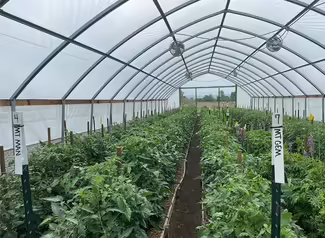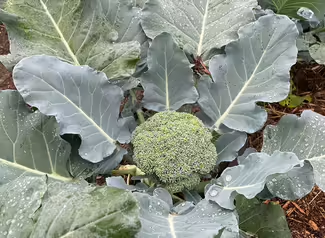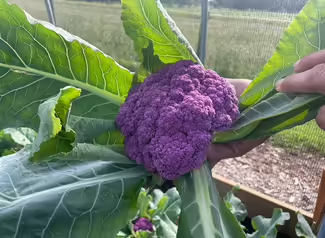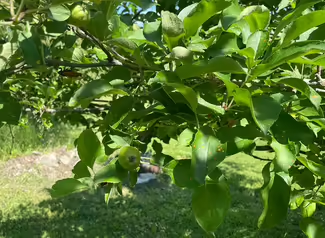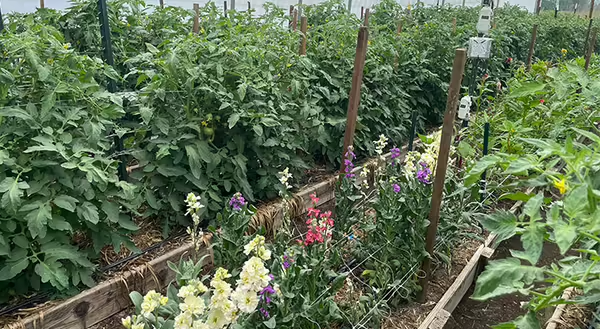
In our current research project, “Strategies for Improving Biological Control of Insect Pests for Vegetable Growers Utilizing High Tunnels”, the second treatment or strategy besides establishing and overwintering cover crops is growing a row of cut flowers within the same high tunnel as the tomato cash crop. From previous research at DSAC, cut flowers drew a diversity of insects into the high tunnel that were not present in the other tunnel where no flowers were grown. By placing the cut flower row in the center of the tunnel, insect monitoring and collecting will inform us about insect activity throughout the high tunnel, with the hopes of seeing increases in predatory and beneficial insects in all rows. Additionally, the cut flowers can also provide some economic return. Stock, celosia, zinnias, sunflowers, and lupine are the five types of flowers growing in the high tunnel. Stock and sunflower transplants will be planted throughout the growing season after harvests from the first plantings are complete. The cover crop residue as well as the cut flowers can be seen in the photo and represent both treatment strategies being researched.
The observations made at the end of April regarding the increased tomato plant growth and darker color differences seen in the control tunnel compared to the treatment tunnel are now no longer noticeable. The side-by-side photo comparison illustrates the growth and color of the tomatoes is pretty much the same in both tunnels at this point. The treatment tunnel is on the left and the control tunnel is on the right. Both are growing the same tomato and pepper varieties. The first fruit clusters have green fruit at baseball size, the second clusters are around golf ball size, and the third clusters are just forming the tiny green fruit. It appears that the fourth and fifth clusters are producing a lot of blooms but it is not anticipated that those will all pollinate and set a full fruit load. This is the first year that we have grown ‘Mountain Man’ and it appears to have a taller growth habit than ‘BHN 589’, ‘Mt. Gem’, ‘BHN 871’, or ‘Scarlet Red’, the other varieties in the trial this year.
Cauliflower and broccoli harvest is basically complete within the caterpillar tunnel. Onions, celery, and lettuce will be planted in the plots following the broccoli and cauliflower. Kale and swiss chard continue to be harvested once or twice a week. The biggest pest problem observed in the caterpillar tunnel has been slugs.
The ‘Gold Rush’ and ‘Pixie Crunch’ apple trees in my backyard have both set fruit this season. Both varieties have disease resistance to apple scab but are susceptible to cedar apple rust. ‘Gold Rush’ also has some resistance/tolerance to powdery mildew and fire blight. The bright orange lesions on the leaves are the first sign that the cedar apple rust spores (which can travel up to a mile) have moved from the alternate host, native eastern red cedar trees, to the apple trees. Effective disease management for cedar apple rust should begin in the pink stage and continue through second cover, see the Midwest Fruit Pest Management Guide for more details. Plum curculio damage is noticeable on the fruit of both varieties. And not to be ignored, the periodical cicadas were making their presence known quite loudly and in great numbers.
